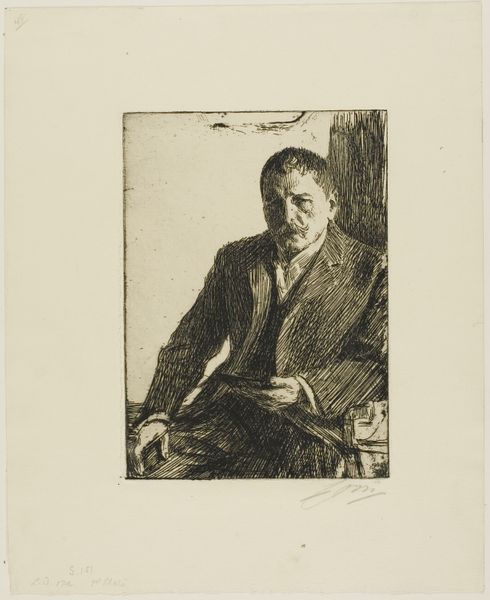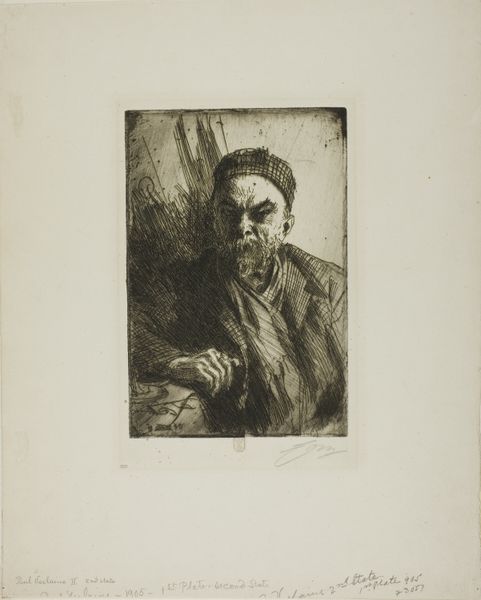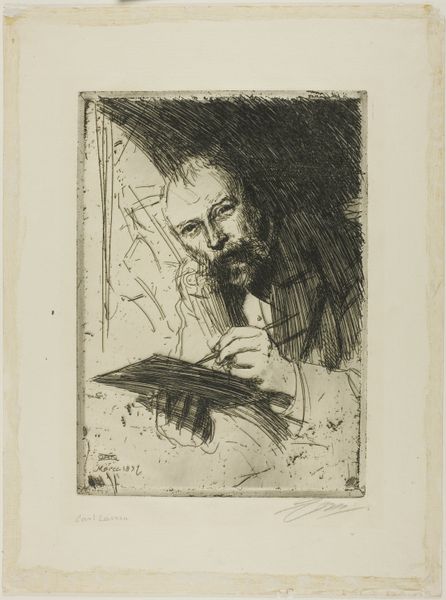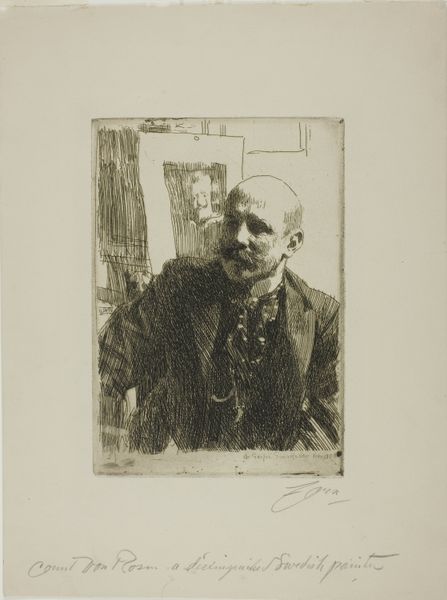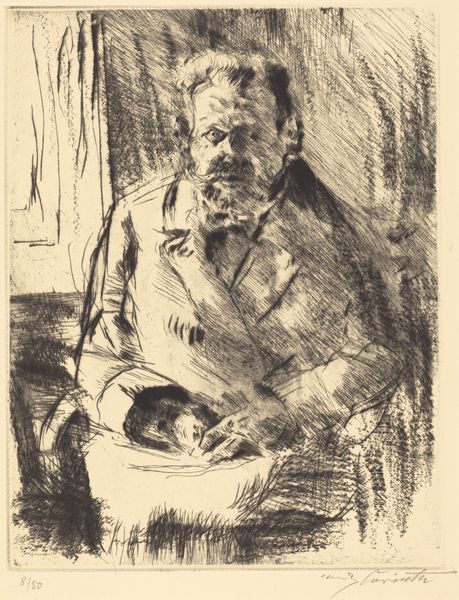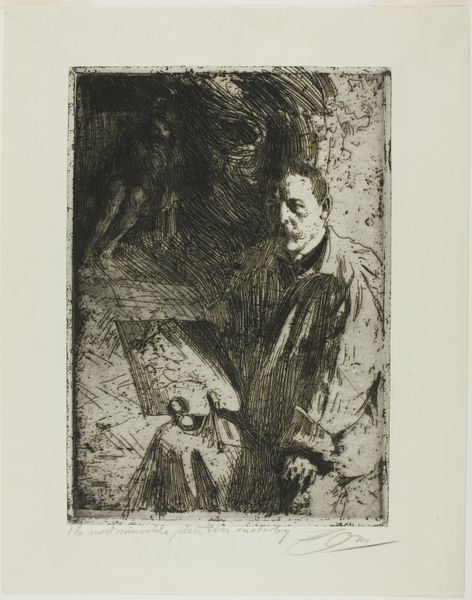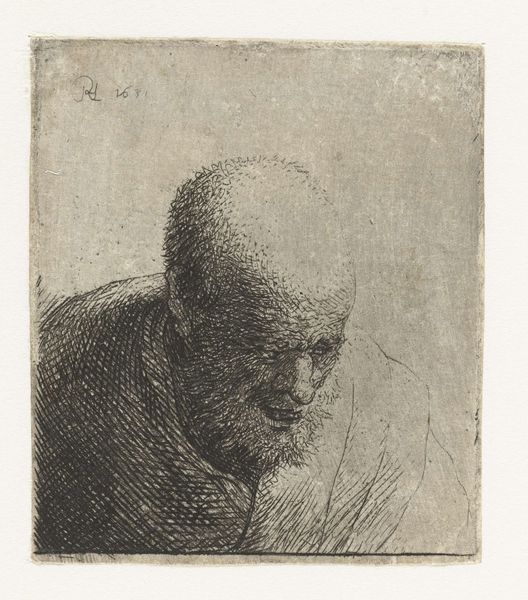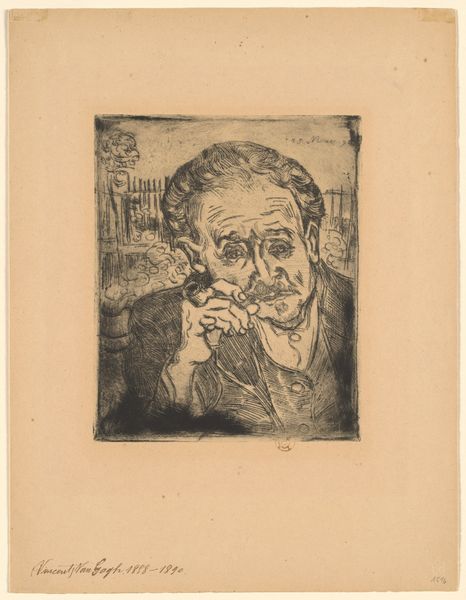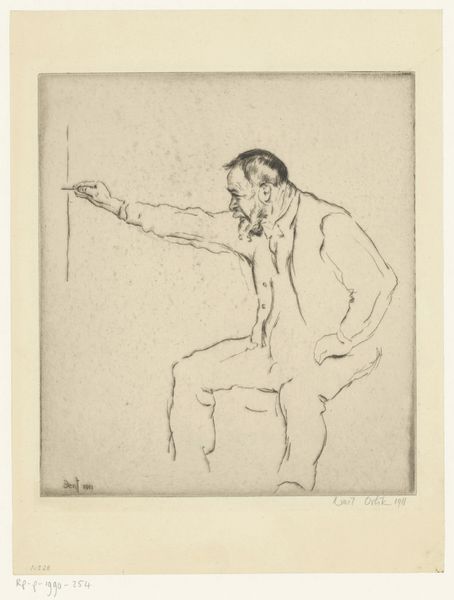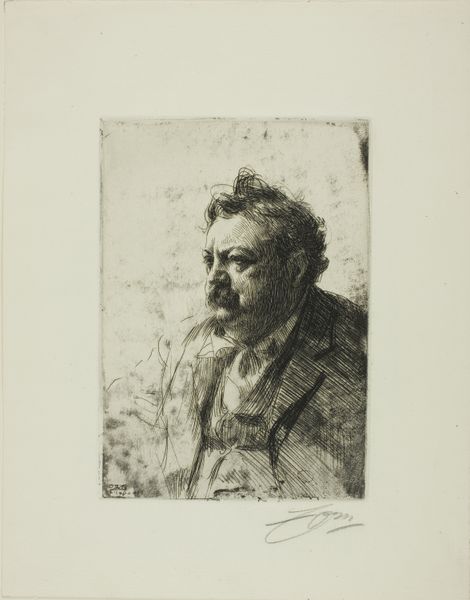
drawing, print, etching, paper, pencil
#
portrait
#
drawing
#
shape in negative space
#
negative space
#
narrative-art
# print
#
french
#
etching
#
neo-impressionism
#
landscape
#
figuration
#
paper
#
pencil drawing
#
pencil
#
france
#
symbolism
Dimensions: 220 × 137 mm (image/plate); 351 × 230 mm (sheet)
Copyright: Public Domain
Curator: This is Charles Maurin's etching, "Portrait of François Claudius Ravachol," created circa 1892-1894. It's part of the Art Institute of Chicago's collection. Editor: Wow, it hits you with this kind of heavy stillness, doesn't it? It's almost a ghost of a portrait. The scratchy, almost frantic lines everywhere add to the unease, like whispers circling a secret. Curator: Maurin situates this portrait of Ravachol, the infamous French anarchist, against the looming presence of the guillotine. He uses it as a stark symbol of state power meeting individual rebellion. Considering Ravachol’s acts and subsequent execution, the etching transcends mere portraiture, becoming a powerful commentary on justice, societal control, and the consequences of dissent. Editor: It really does bring a feeling of unease. Like peering into the last thoughts of a trapped man. He's not just staring, he's contemplating, maybe even defiant. Does knowing more about Ravachol actually change how we perceive Maurin’s rendering, though? Curator: Absolutely. Understanding Ravachol's sociopolitical context illuminates Maurin's artistic choices. It forces us to confront the complexities of revolutionary violence and its repercussions, and the narratives societies construct around figures who challenge established orders. It’s important to consider how Maurin's choices shape, or perhaps even humanize, a figure often demonized. Editor: Makes you wonder what Maurin felt about him. Almost makes the whole etching feel like an elegy instead of condemnation. You see the raw edges, the refusal to pretty him up. A raw human being standing up to some great unfairness, however badly. Curator: Indeed. Maurin's work contributes to broader discussions within art history about representation, ideology, and the ethics of portraying controversial figures. It calls for an examination of the artist’s own biases and investments within the narrative. Editor: Well, after learning about this, it's a little like walking through a graveyard with the subject, maybe. A potent mix of curiosity and melancholic introspection about a turbulent time. Curator: A convergence of historical, social and artistic layers prompting critical examination of narratives, identities, and sociopolitical ideologies, indeed.
Comments
No comments
Be the first to comment and join the conversation on the ultimate creative platform.

